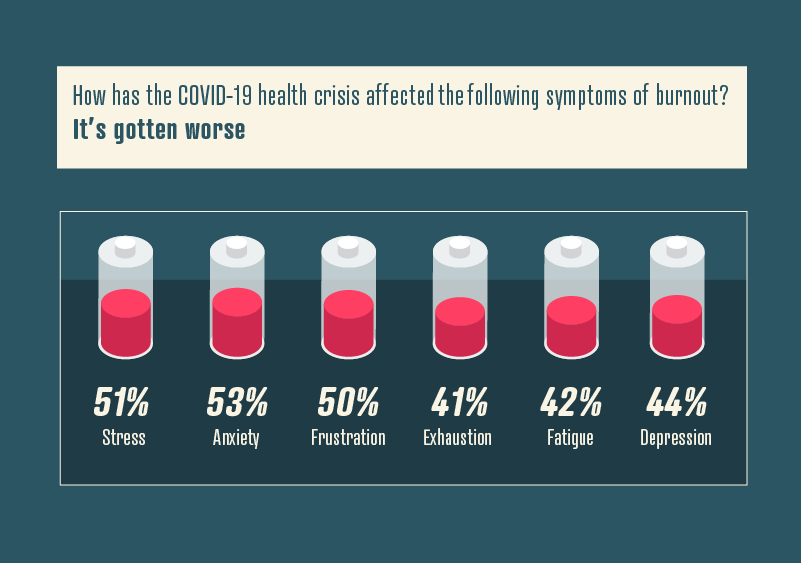While the vast majority of businesses have been affected by COVID-19 and the way we work has changed indelibly, many companies are still adapting to the shifts required in communication and collaboration.
A recent survey found that 37% of workers have seen a decline in productivity since the pandemic, with over half of US employees experiencing increased anxiety, stress or frustration at work. All this is understandable, with uncertainty about the future, worries around job security and lack of face-to-face communication.

So, as HR professionals and managers, what can you do about this? We’ve put together 11 top communication tips to improve quality, efficiency and wellbeing among a remote workforce.
- Tailor your communication
One of the keys to improving remote communication is to tailor your approach – both to the situation and to the individual. Every company and person is dealing with the pandemic and increased remote working situation differently, so ask your team members how they want to be communicated with. For some, emails or IMs will be the preferred method, while others may value the virtual face-to-face interaction of a quick video call to discuss roles and responsibilities for a project.
As well as communication methods, find out how often employees want to connect and use this to manage collaboration between teams. Again, some may welcome regular social interaction while working from home, but others will prefer a more hands-off approach.
- Get everyone on the same page
As soon as you know how and how often your team want to communicate, work out a clear plan for collaborating. Establish guidelines about contact times and communication channels, while adapting the systems you had in place in an office environment – if your teams had daily morning meetings to discuss workloads, for example, rebook those in via Zoom or Teams. Likewise, if your team regularly collaborates with others in the business, make sure you agree guidelines that work for them too, including what’s suitable for email, calls or IMs.
- Provide the best equipment possible
When it comes to collaborating effectively from home, make sure everyone on your team has the equipment they need to communicate effectively. Webcams, mics and headsets are a necessity to facilitate efficient communication, while extra screens, keyboards and other equipment will reduce any loss of productivity by providing a true “home office” environment.
It’s also really important to make sure your employees have ergonomic office equipment that will keep them comfortable and safe while working remotely. An office chair and suitable desk can prevent injury and ultimately lead to higher levels of productivity.
- Create a virtual office environment
Working remotely for prolonged periods can cause a sense of isolation that, as well as being damaging to mental health, has a negative effect on productivity and collaboration. It’s important that your team members retain their sense of accountability that regular catch-ups and face to face interaction in an office environment reinforce. For that reason, try to create a virtual office environment, where people still regularly interact and chat with colleagues. That might be daily “water cooler” chats with your team or a virtual video canteen – anything to keep that team ethos going.
- Socialize with your teams
Teams that work better together tend to be those with genuine social connections who view each other as more than just work colleagues. In an office environment, suggesting a team lunch or after work drinks is easy and can be a spontaneous way to build and maintain these relationships. With that in mind, try and organize social activities that can still be done working remotely – think quizzes, virtual escape rooms, food and drink tasting, or anything else that can be done via video chat.
- Retain visibility
It’s easy to ignore an email or IM, and often hard to communicate impactfully through them. Slide shows and lengthy emails aren’t suitable to keep staff engaged when working remotely and will hinder efforts to communicate and collaborate effectively, so make sure you incorporate video calls as much as possible. Whether it’s for team meetings, one to one catch-ups or big presentations, your team and other colleagues will connect more if they can read your body language and facial expressions.
- Support your staff
With the symptoms of burnout mentioned above rife in working from home environments, make sure you’re doing everything you can to reduce stress, anxiety and depression amongst your team. It’s important to be over supportive, offering regular opportunities for frank and sympathetic communication. Everyone’s remote working experience and preferences are different so, importantly, make sure you ask what the best way is to communicate with and support every member of staff.
- Keep focusing on personal development
Keeping motivation high among a remote workforce can be tough, and a lack of purpose or direction can be damaging to this. With this in mind, make sure you keep focusing on the personal development of staff – just because they’re temporarily or permanently not in the office, doesn’t mean your team’s drive to improve and progress has gone. Make every effort to allow them to continue developing, and you’ll see a big improvement in motivation and the subsequent communication and collaboration that follows.
- Meet in person whenever you can
While this may not always be possible, meeting in person can provide a respite from some of the issues mentioned here and give staff a renewed opportunity to communicate and work together. Whether it’s for a meeting, brainstorm or just to provide a collaborative space for discussing and developing ideas, meeting your team will reinvigorate working relationships and improve communication.
- Give your teams a break
Give your staff some slack, especially while the remote working process is still new for so many of us.
Every team member will be working in a unique environment and have to overcome different challenges, from technical problems to external factors like childcare, so be sure to tailor your approach to this.
If your staff need to work different hours or if they can’t make certain meetings, make sure to let them know that this is fine and all part of the process of adapting to a new way of working.
- Don’t micromanage
Finally, trust your team and resist the urge to micromanage them. While micromanagement is always unadvised, there can be even more of a temptation when working remotely to demand the kind of visibility that the office provides. So, while it’s important to communicate regularly with your staff, they certainly won’t benefit from constant monitoring – let them do their jobs and thrive in this new environment!
Follow all of the above tips and you’ll be well on the way to managing an effective, efficient remote workforce. While communication and collaboration can be challenging outside of the traditional office environment, these strategies will help you retain and improve it.
For more such Updates Log on to www.hrtechcube.com
ABOUT THE AUTHOR


Dan Yeo
Senior Content Manager at Search Laboratory Leeds
Dan Yeo has a Level 5 Diploma in Leadership and Management from Leeds Beckett University, an accredited Institute of Leadership & Management (ILM) course provider, and has worked in various different management roles in the digital marketing industry across the last seven years. He writes about management, leadership, HR and digital marketing, and has featured as a speaker at several marketing events.












